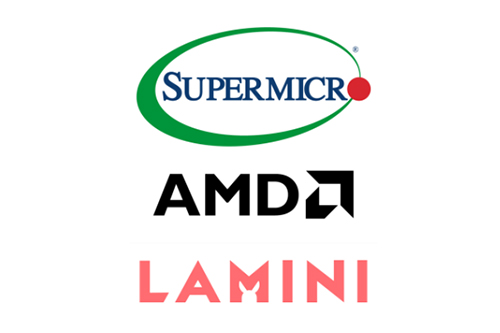Generative AI systems powered by large language models (LLMs) have a serious problem: Their answers can be inaccurate—and sometimes, in the case of AI “hallucinations,” even fictional.
For users, the challenge is equally serious: How do you get precise factual accuracy—that is, correct answers with zero hallucinations—while upholding the generalization capabilities that make LLMs so valuable?
A California-based company, Lamini, has come up with an innovative solution. And its software stack runs on Supermicro servers powered by AMD CPUs and GPUs.
Why Hallucinations Happen
Here’s the premise underlying Lamini’s solution: Hallucinations happen because the right answer is clustered with other, incorrect answers. As a result, the model doesn’t know that a nearly right answer is in fact wrong.
To address this issue, Lamini’s Memory Tuning solution teaches the model that getting the answer nearly right is the same as getting it completely wrong. Its software does this by tuning literally millions of expert adapters with precise facts on top of any open-source LLM, such as Llama 3 or Mistral 3.
The Lamini model retrieves only the most relevant experts from an index at inference time. The goal is high accuracy, high speed and low cost.
More than Fine-Tuning
Isn’t this just LLM fine-tuning? Lamini says no, its Memory Tuning is fundamentally different.
Fine-tuning can’t ensure that a model’s answers are faithful to the facts in its training data. By contrast, Lamini says, its solution has been designed to deliver output probabilities that are not just close, but exactly right.
More specifically, Lamini promises its solution can deliver 95% LLM accuracy with 10x fewer hallucinations.
In the real world, Lamini says one large customer used its solution and raised LLM accuracy from 50% to 95%, and reduced the rate of AI hallucinations from an unreliable 50% to just 5%.
Investors are certainly impressed. Earlier this year Lamini raised $25 million from an investment group that included Amplify Partners, Bernard Arnault and AMD Ventures. Lamini plans to use the funding to accelerate its expert AI development and expand its cloud infrastructure.
Supermicro Solution
As part of its push to offer superior LLM tuning, Lamini chose Supermicro’s GPU server — model number AS -8125S-TNMR2 — to train LLM models in a reasonable time.
This Supermicro 8U system is powered by dual AMD EPYC 9000 series CPUs and eight AMD Instinct MI300X GPUs.
The GPUs connect with CPUs via a standard PCIe 5 bus. This gives fast access when the CPU issues commands or sends data from host memory to the GPUs.
Lamini has also benefited from Supermicro’s capacity and quick delivery schedule. With other GPUs makers facing serious capacity issues, that’s an important benefit for both Lamini and its customers.
“We’re thrilled to be working with Supermicro,” says Lamini co-founder and CEO Sharon Zhou.
Could your customers be thrilled by Lamini, too? Check out the “do more” links below.
Do More:
- Read the full Supermicro customer success story: Lamini Chooses Supermicro GPU Servers for LLM Tuning Offering
- Check out the Supermicro 8U GPU server powered by AMD processors
- Read a Lamini blog post: Building high-performance LLM applications on AMD GPUs with Lamini



